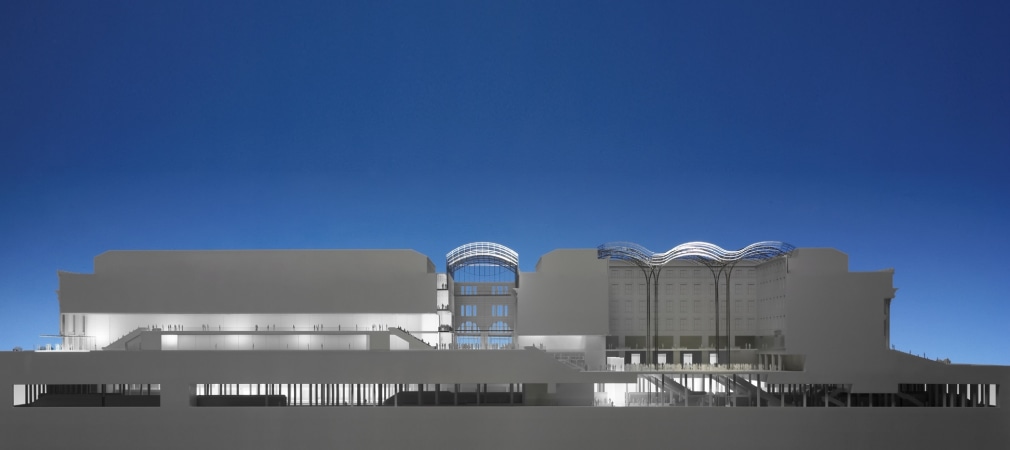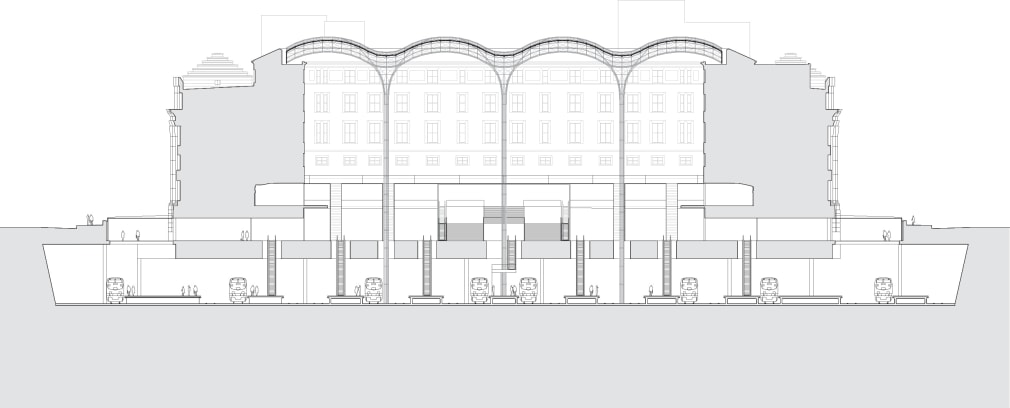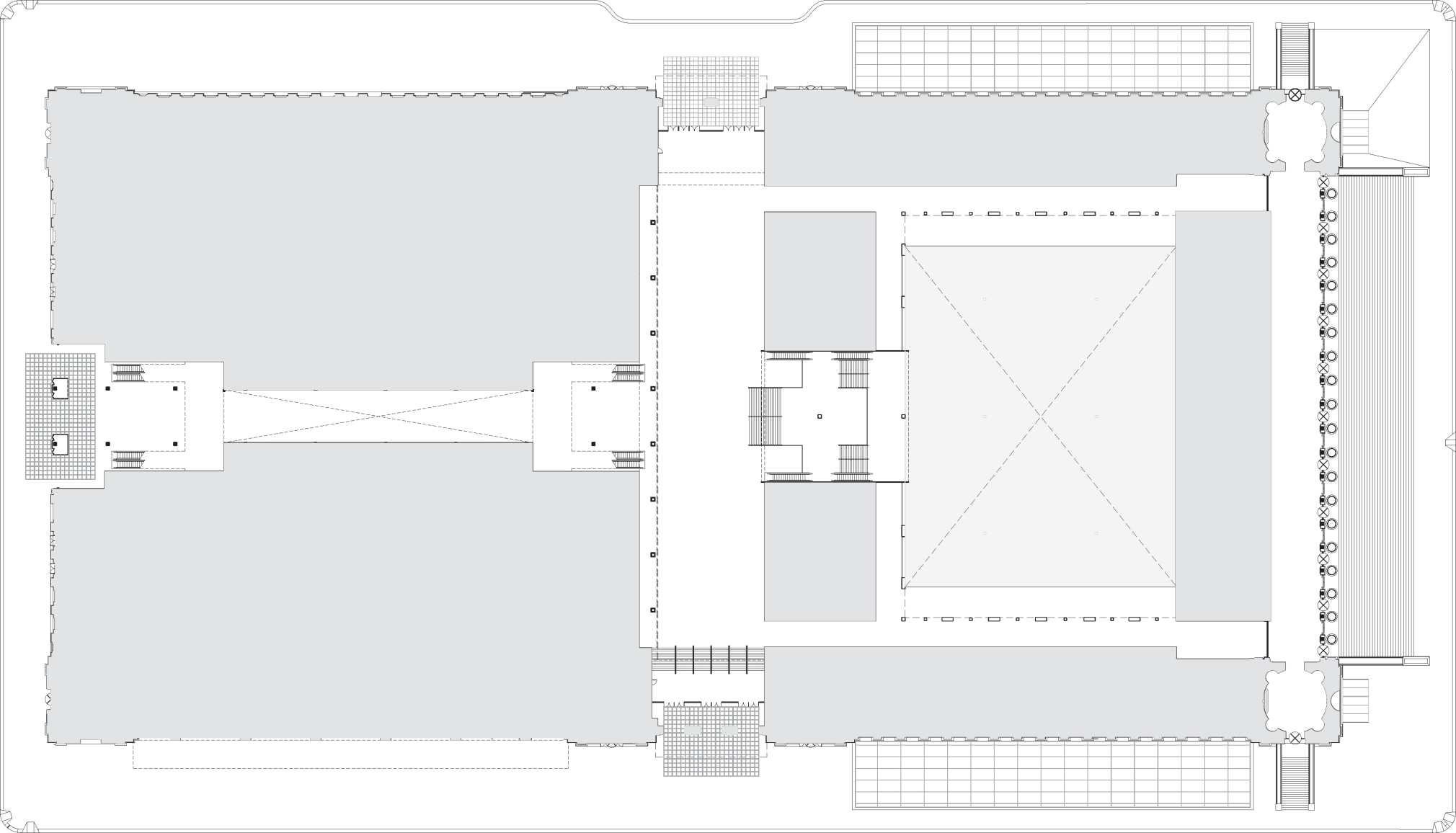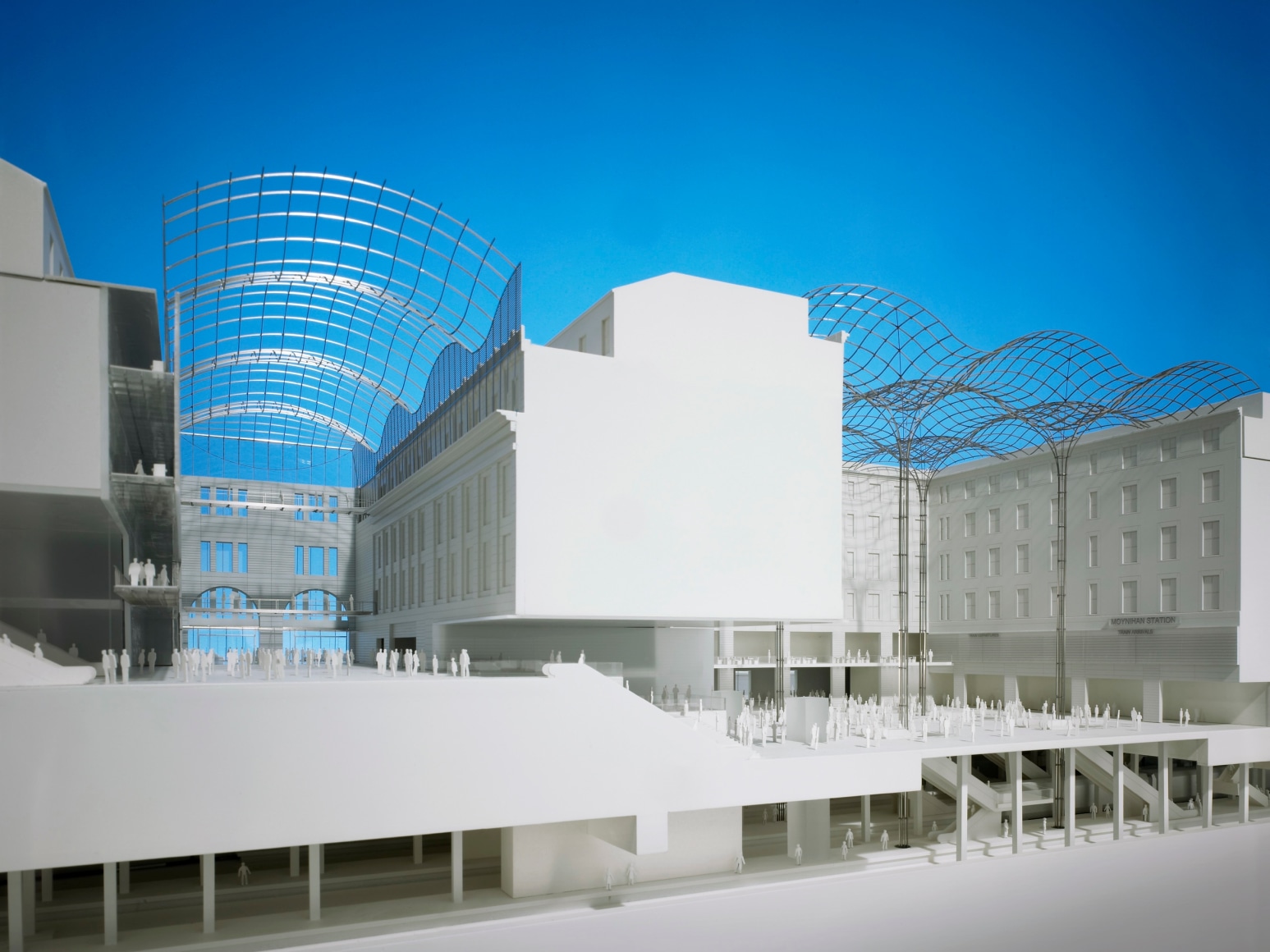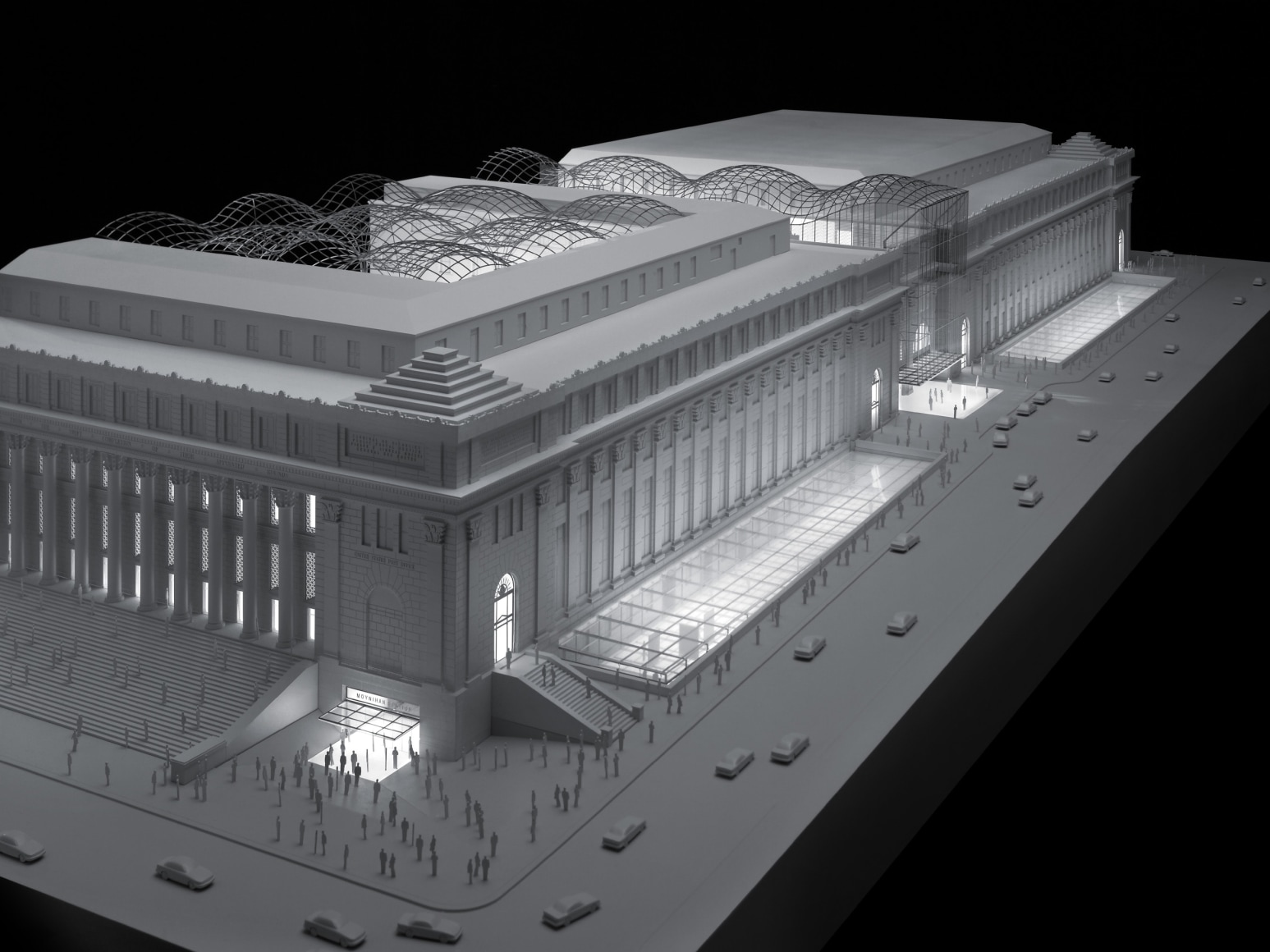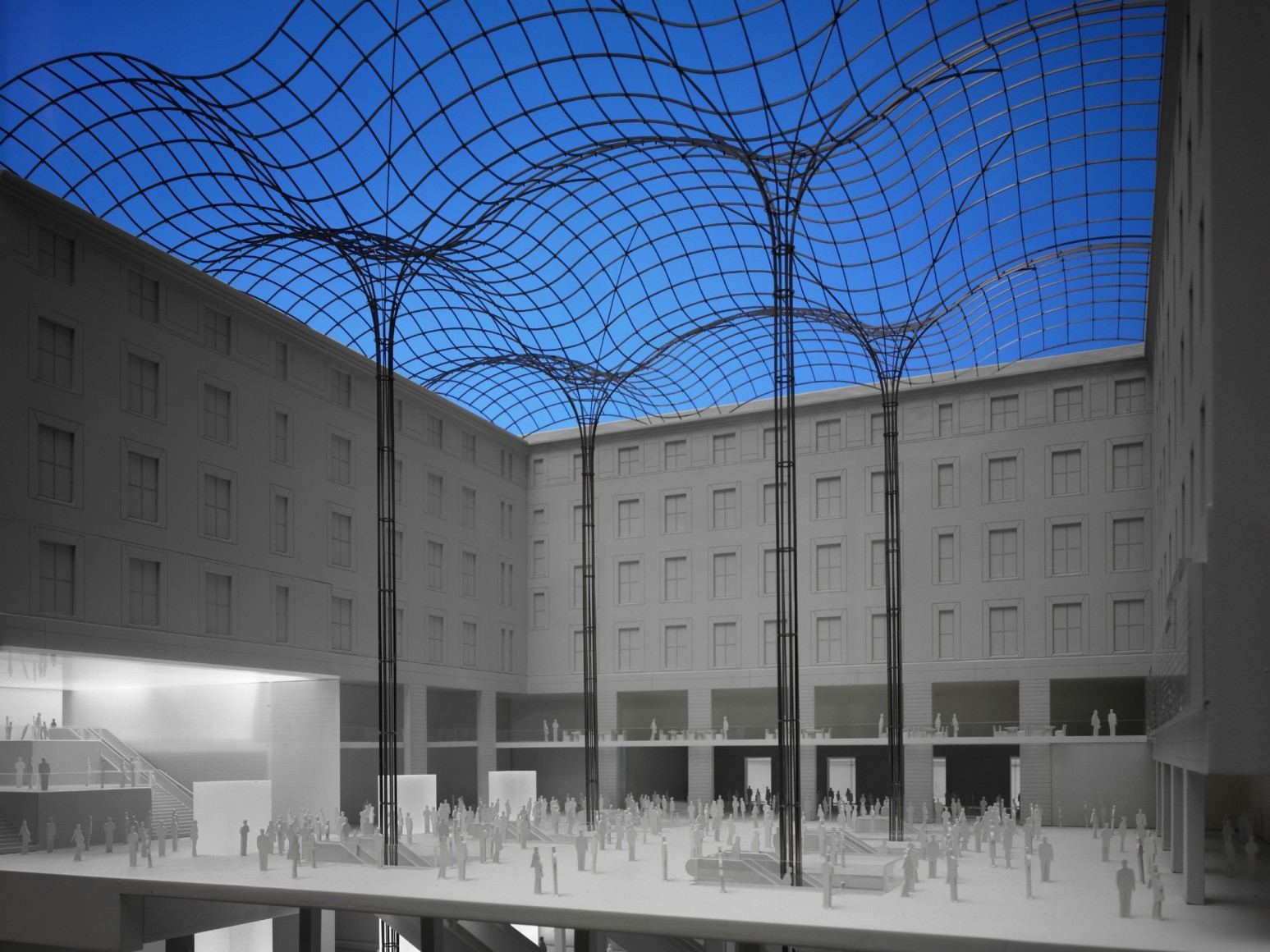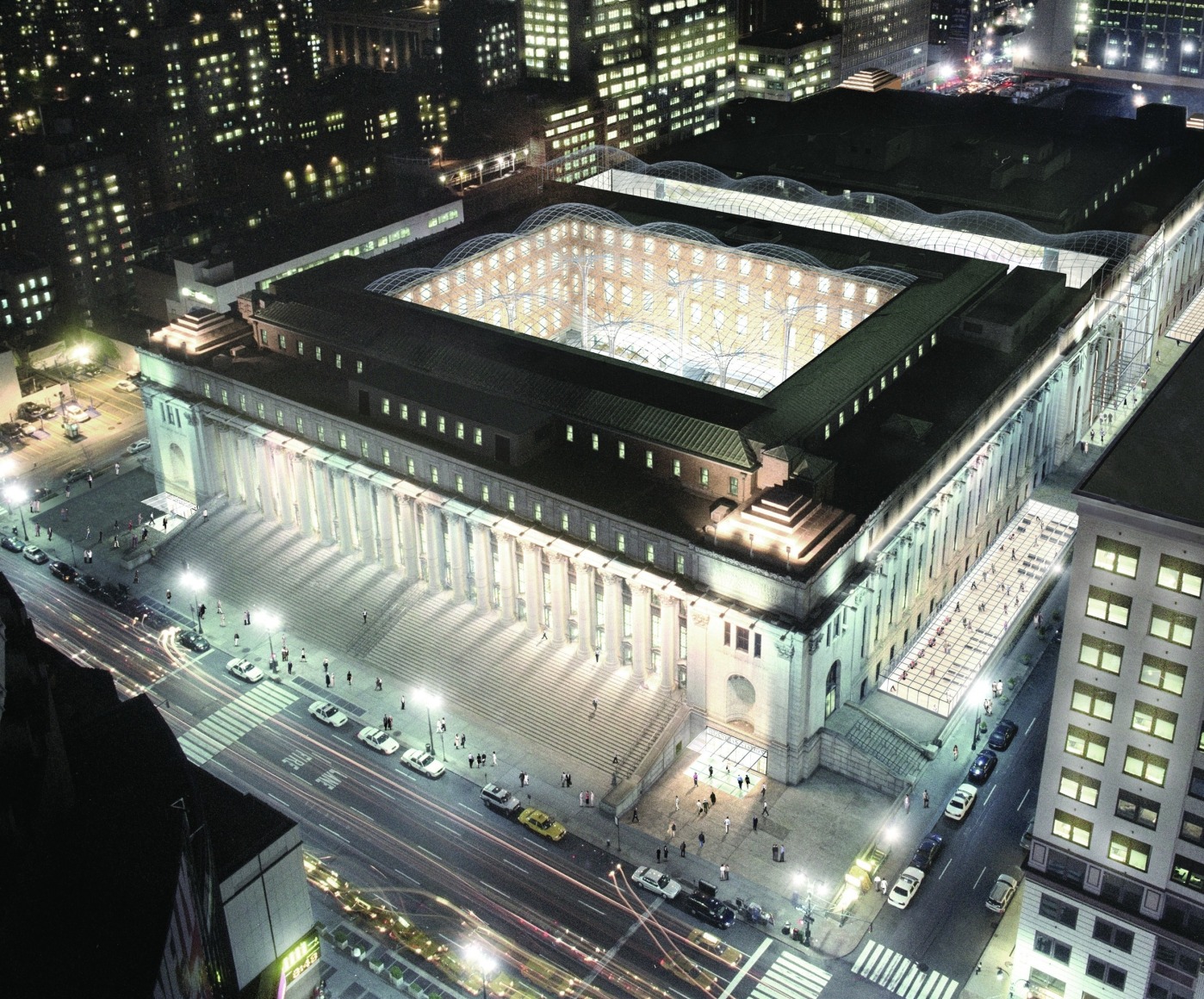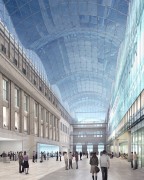The project deploys a series of strategic light and spatial interventions that dramatically and poetically engage the site’s architectural history and environmental qualities.
MOYNIHAN STATION REDEVELOPMENT WINNING SCHEME
NEW YORK CITY, USA
2005
BackImages
Description
James Carpenter Design Associates, working with HOK, developed the Daniel Patrick Moynihan Station Redevelopment Competition’s Winning Scheme. JCDA proposed light as the primary design principle to transform the McKim Mead and White, Farley Building into a Landmark transit center. JCDA’s design clarifies the thresholds and methods of way-finding that guide the individual through this remarkable building. The integration of poetics into the architecture is intended to elevate the experience of arrival and passage through the building and the city.
JCDA’s work is focused on the building’s main entrances located North and South mid-block between Eighth and Ninth Avenues, and entry points on the East and West ends of the building, the courtyard’s roof and columns as well as the moats that run the length of the building’s North and South sides. These elements harness the historical significance and neo-classical design of the building by using glass and a minimal gridshell structure to embody light within the building’s large volumes. As in the original Penn Station, daylight reaches the train tracks to emphasize the city’s presence at the moment of arrival and departure.
Architect: HOK
Engineer: Schlaich Bergermann and Partner
